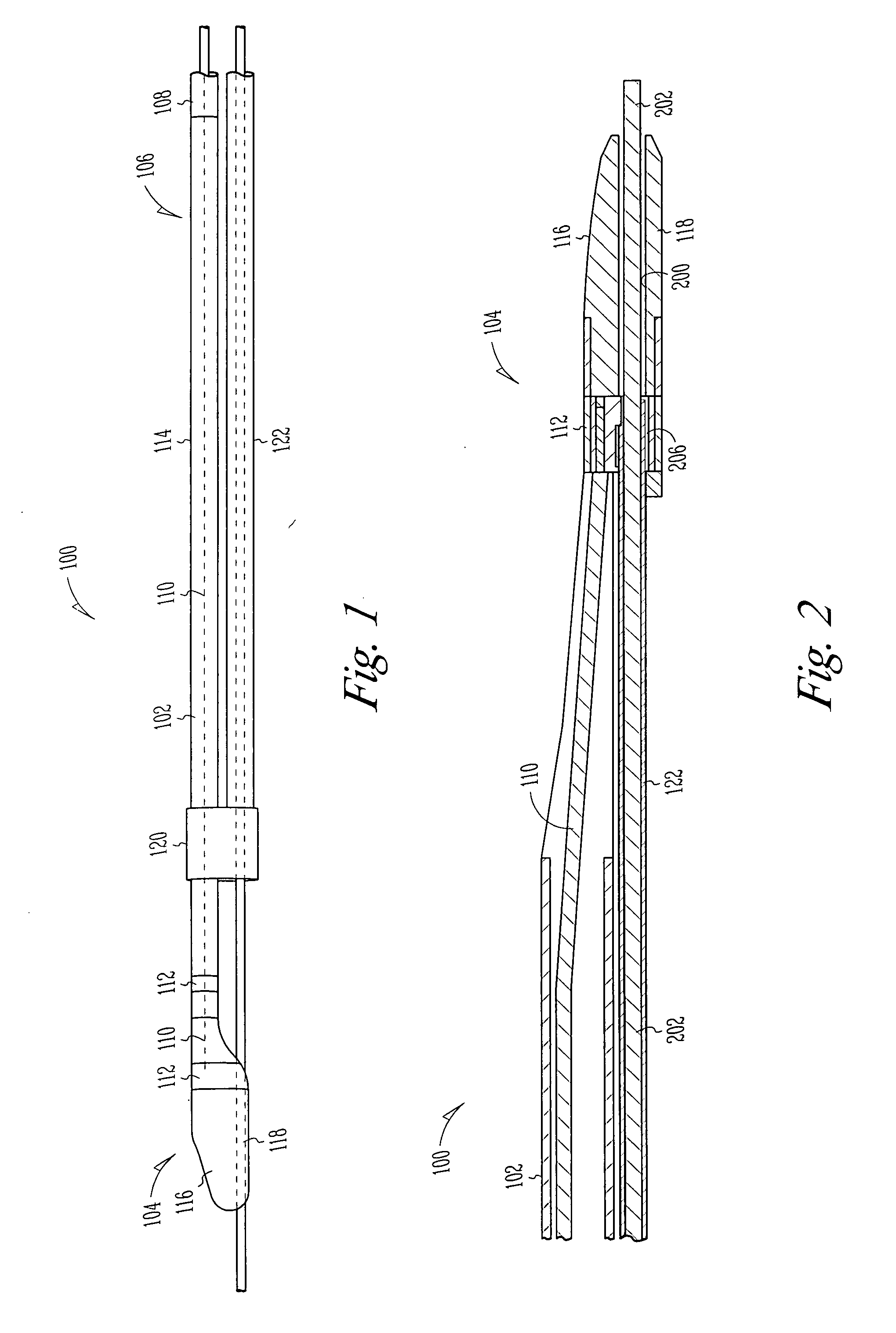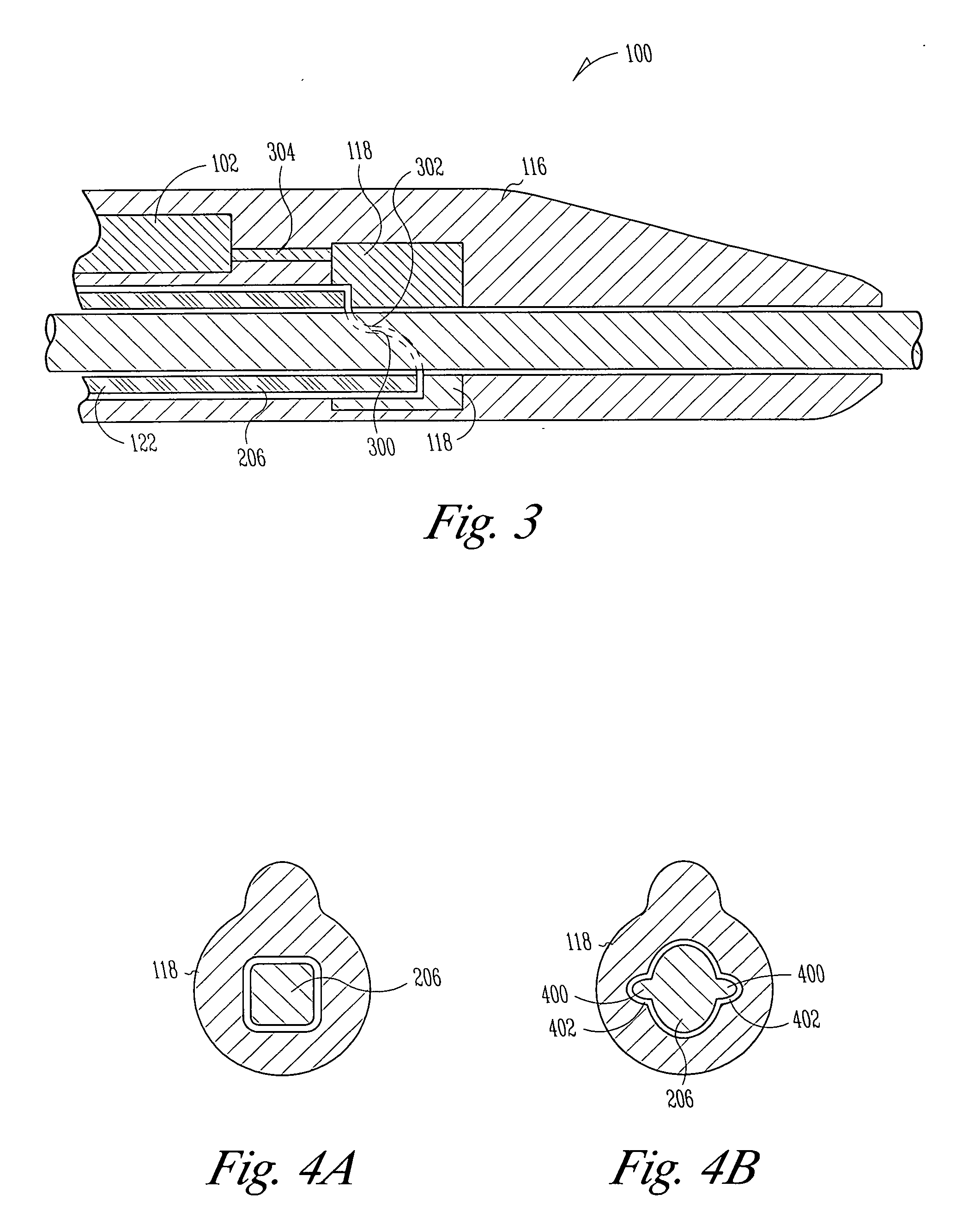Lead assembly and methods including a push tube
a technology of push tube and lead, which is applied in the direction of internal electrodes, transvascular endocardial electrodes, therapy, etc., can solve the problems of further complicated procedures, difficult to push the lead through the twisting vasculature with a stylet, and difficult to navigate flexible cardiac, etc., to achieve less invasive, easier to navigate the vasculature, and small cross-section
- Summary
- Abstract
- Description
- Claims
- Application Information
AI Technical Summary
Benefits of technology
Problems solved by technology
Method used
Image
Examples
Embodiment Construction
[0052] In the following detailed description, reference is made to the accompanying drawings which form a part hereof, and in which is shown by way of illustration specific embodiments in which the invention may be practiced. These embodiments are described in sufficient detail to enable those skilled in the art to practice the invention, and it is to be understood that other embodiments may be utilized and that structural changes may be made without departing from the scope of the present invention. Therefore, the following detailed description is not to be taken in a limiting sense, and the scope of the present invention is defined by the appended claims and their equivalents.
[0053]FIG. 1 is a side view of a lead assembly 100 including an elongate body 102. The elongate body 102 extends between a distal end 104 and a proximal end 106. The elongate body includes a connector terminal 108 at the proximal end 106. The connector terminal 108 is sized and shaped to couple with a pulse ...
PUM
 Login to View More
Login to View More Abstract
Description
Claims
Application Information
 Login to View More
Login to View More - R&D
- Intellectual Property
- Life Sciences
- Materials
- Tech Scout
- Unparalleled Data Quality
- Higher Quality Content
- 60% Fewer Hallucinations
Browse by: Latest US Patents, China's latest patents, Technical Efficacy Thesaurus, Application Domain, Technology Topic, Popular Technical Reports.
© 2025 PatSnap. All rights reserved.Legal|Privacy policy|Modern Slavery Act Transparency Statement|Sitemap|About US| Contact US: help@patsnap.com



